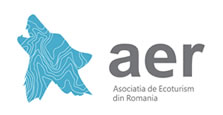With its diverse and biodiverse landscape, the Danube Delta is an unrivaled destination for birdwatchers. Among the many bird species that find shelter in this natural paradise, the common pelican and the curly pelican are two fascinating creatures that add to the unique charm of the Delta.
Common pelican (Pelecanus onocrotalus)
The common pelican, also known as the white pelican, is one of the world’s largest and most remarkable waterbirds. With a wingspan of up to 3.6 meters and a weight of up to 15 kilograms, this impressive species astonishes with its size. With a long, powerful beak, the common pelican feeds by fishing in groups, sometimes forming veritable hunting teams that coordinate their movements to catch fish in the water.
The common pelican finds ideal feeding and breeding conditions in the Danube Delta. The fish-rich waters of the Delta are an inexhaustible source of food for these elegant birds. During the breeding season, colonies of common pelicans gather in certain areas of the Delta, building nests in bushes or on isolated islands.
Crested pelican (Pelecanus crispus)
The crested pelican is a rarer and lesser-known species than the common pelican, but just as fascinating. Also known as the crested pelican, this species is notable for the impressive crest of feathers that decorate its head during the breeding season. During the rest of the year, the crest is smaller or absent.
The crested pelican is very similar to the common pelican in behaviour and diet, feeding mainly on fish that it catches by diving into the water. In the Danube Delta, the curly pelican can be found in the same areas as the common pelican, taking advantage of the Delta’s rich aquatic resources to ensure its survival.
Protection and conservation
Both the common pelican and the crested pelican are vulnerable species and need protection to maintain healthy populations. The Danube Delta, with its diverse and well-preserved ecosystem, provides an essential habitat for these magnificent birds. Despite this, climate change, pollution, and human disturbance can adversely affect the environment in which these birds live.
Efforts to conserve and protect the Danube Delta and its habitat are essential to ensure the survival of pelicans and other bird and wildlife species. Through education, research, and responsible management of natural resources, we can help protect these aerial jewels for future generations.
Both common and crested pelicans play a vital role in the Danube Delta ecosystem. By controlling populations of fish and other aquatic organisms, these top predators help maintain the ecological balance in the area. Moreover, their nesting colonies provide vital habitat for other bird and animal species, contributing to the diversity and stability of the delta ecosystem.
We encourage visitors to get involved in conservation efforts and enjoy the unique beauty of these wonderful avian creatures in their natural habitat.
If you want to experience the beauty and grace of pelicans in their natural environment, the Danube Delta is the perfect destination.
Boat trips through the canals and lakes of the Delta give you the chance to observe these magnificent birds as they forage for food or tend their young in their nests.
Every encounter with a pelican in the wild is an unforgettable memory and a lesson in the beauty and fragility of nature.













